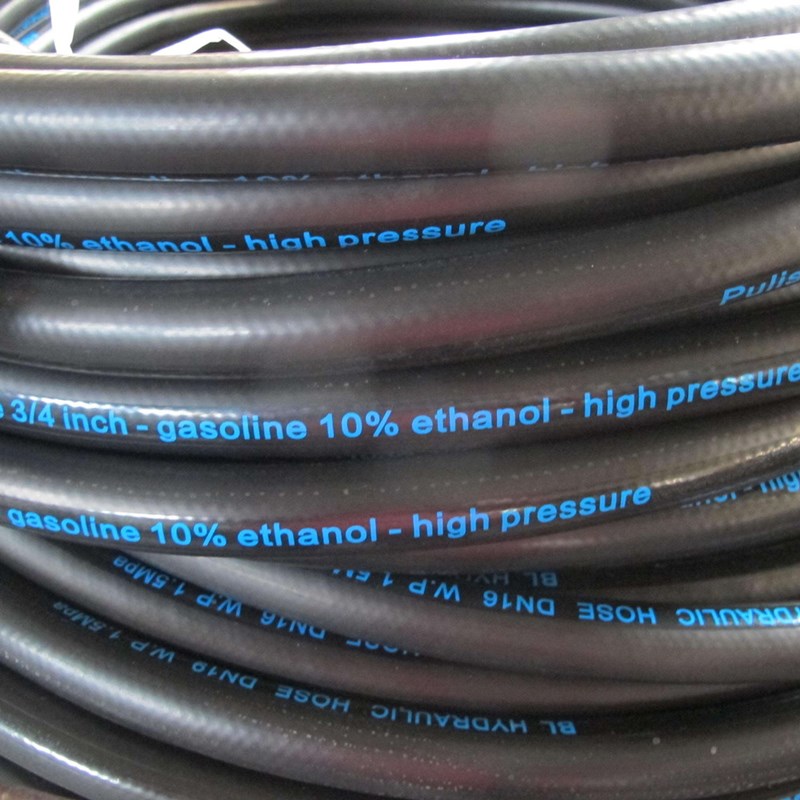335345435
Nov . 09, 2024 21:46 Back to list
Two Wire Braided Hydraulic Hose for Reliable Fluid Transfer and Durability in Heavy Applications
Understanding Two-Wire Braided Hydraulic Hoses
Hydraulic hoses are key components in hydraulic systems, transferring fluids under pressure to power machinery and equipment. Among the various types of hydraulic hoses available, the two-wire braided hydraulic hose stands out for its robustness and versatility. This article explores the features, applications, advantages, and considerations for using two-wire braided hydraulic hoses in various industries.
Structure and Design
A two-wire braided hydraulic hose typically consists of three main components the inner tube, the reinforcement layer, and the outer cover. The inner tube is usually made from synthetic rubber, which is capable of withstanding high pressure and providing excellent fluid compatibility. The reinforcement layer consists of two layers of braided steel wire, which enhances the hose's strength and pressure rating, making it suitable for high-pressure applications. Finally, the outer cover, also made from synthetic rubber, protects the hose from environmental factors such as abrasion, UV rays, and oils.
The two-wire braid design offers superior flexibility and bending characteristics compared to a spiral wire hose, making it easier to install in tight spaces without compromising performance. This construction also ensures that the hose maintains its shape under pressure, which is essential for consistent fluid delivery.
Applications
Two-wire braided hydraulic hoses are widely used across a variety of sectors, including
1. Construction and Earthmoving Equipment These hoses are ideal for powering hydraulic excavators, bulldozers, and loaders where reliability under pressure is crucial.
2. Agricultural Machinery Farmers rely on hydraulic hoses for operating tractors, harvesters, and other equipment. The durability and flexibility of two-wire braided hoses make them suitable for challenging agricultural environments.
3. Automotive Industry In automotive applications, these hoses are used in hydraulic brake systems and other fluid transfer applications requiring high pressure and reliability.
4. Manufacturing and Industrial Equipment Hydraulic presses, conveyor systems, and machinery used in manufacturing processes often utilize these hoses for efficient operation.
5. Marine Applications The marine industry also employs two-wire braided hydraulic hoses for systems that require resistance to saltwater and other harsh environmental conditions.
Advantages
There are several advantages to using two-wire braided hydraulic hoses
two wire braided hydraulic hose

- High Pressure Ratings They are designed to handle high-pressure conditions, often up to 4,000 psi or more, depending on the specific hose specifications.
- Flexibility Their braided construction allows for greater flexibility, enabling easier routing in tight spaces without kinking.
- Durability The braiding provides superior resistance to abrasion and environmental damage, extending the lifespan of the hose.
- Reduced Weight Compared to other hoses with similar pressure ratings, the two-wire braided design can offer a lighter weight solution, contributing to overall equipment efficiency.
- Variety of Options Two-wire braided hydraulic hoses come in various sizes and specifications, catering to different fluid types and applications.
Considerations
Despite their numerous advantages, there are a few considerations when using two-wire braided hydraulic hoses
- Temperature Range It's important to be aware of the temperature range that the hose can handle. Exceeding these limits can compromise the integrity of the hose.
- Fluid Compatibility Ensuring that the hose material is compatible with the hydraulic fluid being used is critical to avoid chemical reactions that can degrade the hose.
- Installation Practices Proper installation techniques must be followed to prevent premature failure. This includes avoiding sharp bends and ensuring proper fittings are used.
- Regular Inspection Regular checks for signs of wear, kinking, or abrasion will help maintain the integrity of the hose and ensure safe operation.
Conclusion
Two-wire braided hydraulic hoses are essential components in numerous applications, known for their strength, flexibility, and durability under pressure. Understanding their construction, advantages, and potential limitations helps businesses make informed decisions when selecting hydraulic hoses for their operations. With the right maintenance and care, these hoses can contribute significantly to the efficiency and safety of hydraulic systems in various industries.
-
SAE 100 R17 Black Smooth Cover Hydraulic Hose
NewsMar.07,2025
-
SAE 100 R17 Black Smooth Cover Hydraulic Hose
NewsMar.07,2025
-
SAE 100 R17 Black Smooth Cover Hydraulic Hose
NewsMar.07,2025
-
SAE 100 R17 Black Smooth Cover Hydraulic Hose
NewsMar.07,2025
-
SAE 100 R17 Black Smooth Cover Hydraulic Hose
NewsMar.07,2025
-
steel wire braided hydraulic hose
NewsMar.07,2025



